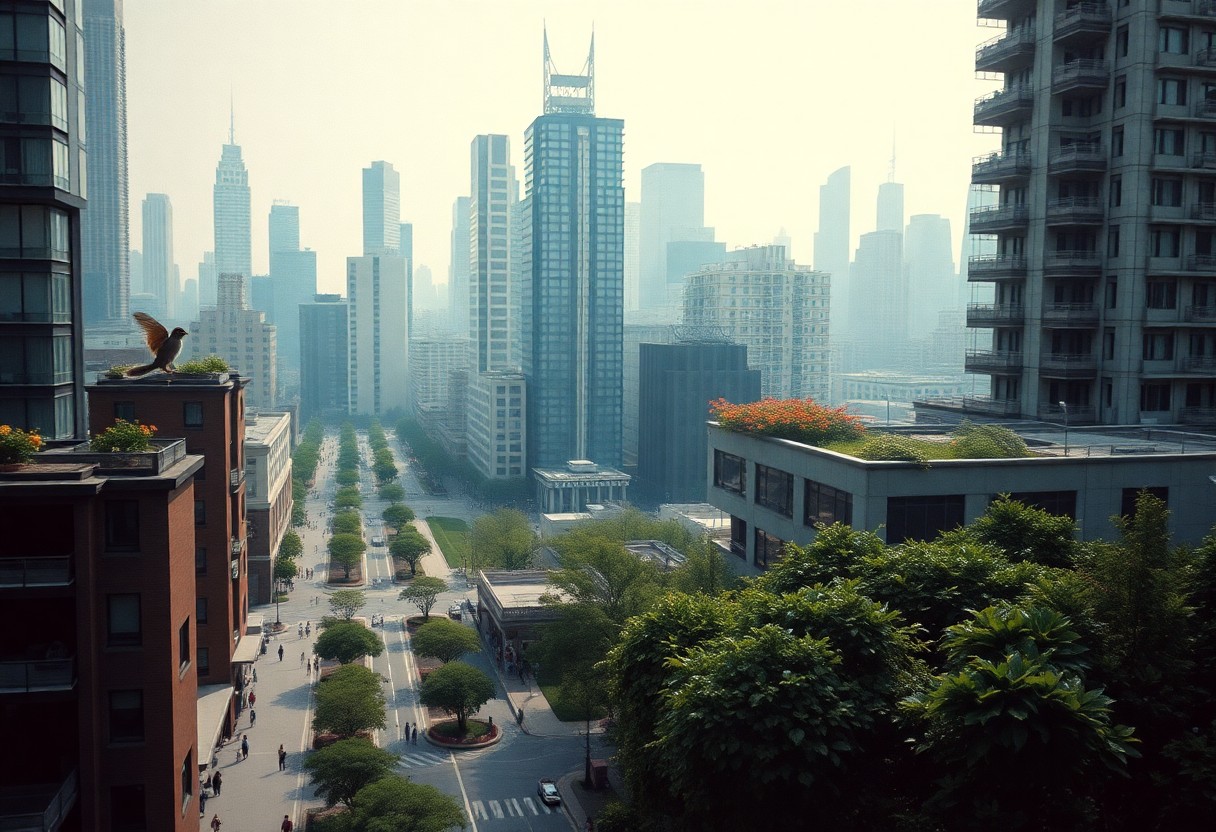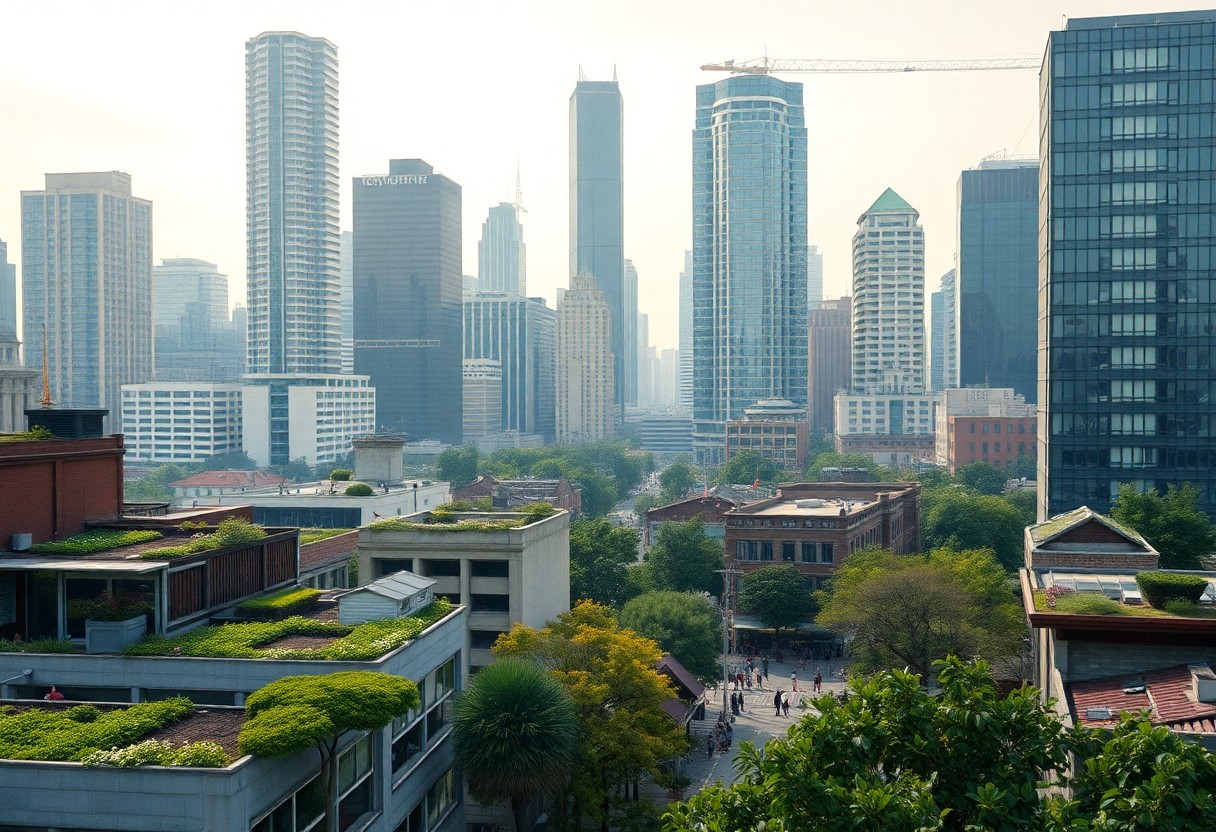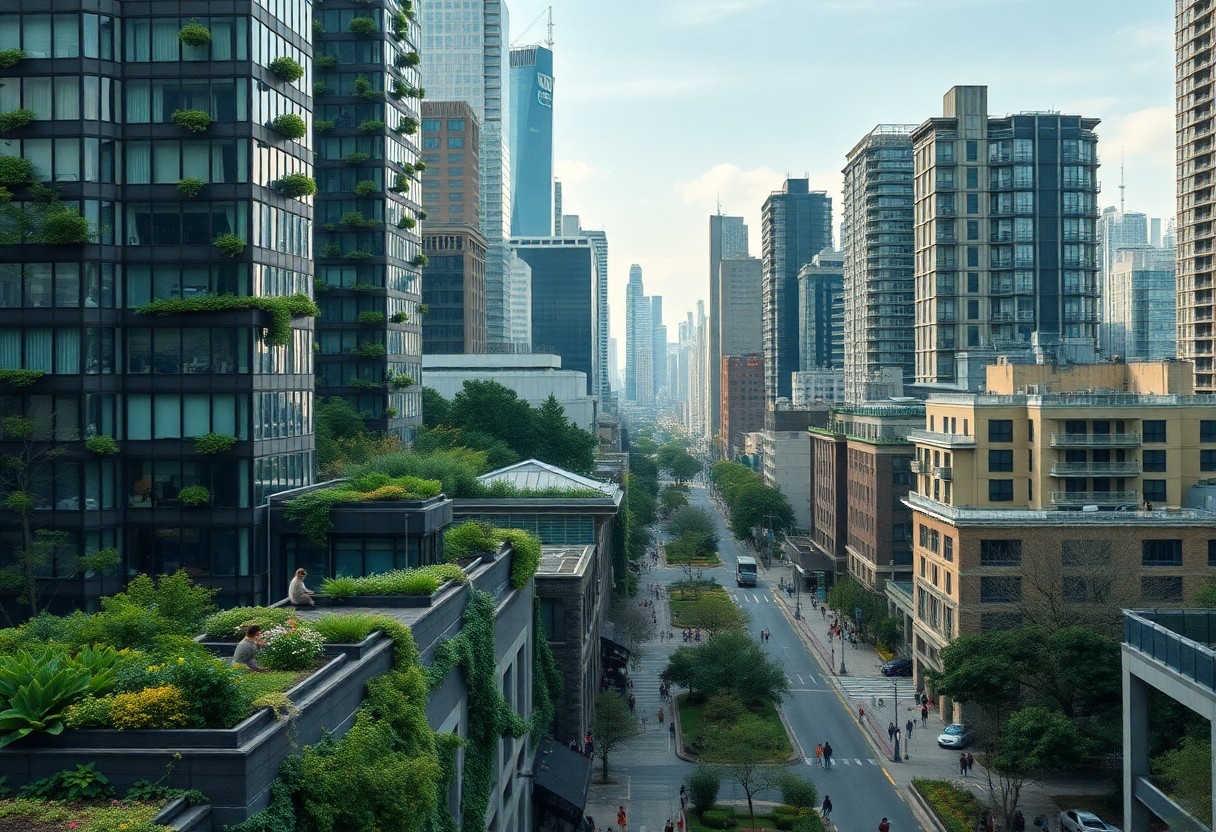It’s time to explore the fascinating world of urban ecosystems, where cities transform into unique habitats shaped by human activity. As urban dwellers, you may not realise how your environment functions as an intricate ecosystem, influencing climate, biodiversity, and overall air quality. This blog post will guide you through the distinct characteristics of urban ecosystems, highlighting the challenges they face and the innovative solutions that can lead to more sustainable urban living.

Defining Urban Ecosystems
Before delving into urban ecosystems, it’s imperative to recognise how these environments are fundamentally shaped by human activity. Unlike natural ecosystems, urban areas possess unique characteristics and dynamics, which result from the interaction between biotic and abiotic factors. Understanding these differences is key to appreciating the complex interplay within urban habitats.
What Constitutes a City?
An urban area typically qualifies as a city based on population thresholds and specific urban characteristics, such as density, infrastructure, and governance. For instance, over 55% of the global population now resides in urban settings, highlighting the significant role cities play in contemporary life and the pressing need to understand their dynamics.
The Components of Urban Ecosystems
On a closer examination of urban ecosystems, you will find a diverse array of biotic (living) and abiotic (non-living) factors that together define these environments. The interactions among these components differ markedly from those in natural ecosystems, creating unique challenges and opportunities for urban dwellers.
And as you consider the components of urban ecosystems, think about the variety of elements involved. These include diverse plant species that have adapted to urban conditions, animals that thrive in city parks, and non-living factors like roads and buildings that influence how life exists within the urban context. The interplay between these elements creates a dynamic habitat, showcasing resilience and adaptability, even in the bustling heart of cities.
The Impact of Urbanization on Climate and Environment
There’s no denying that urbanisation significantly alters local climates and environmental conditions, creating unique challenges for urban dwellers. As cities expand, various factors come into play, reshaping the environment and influencing your surroundings in ways that may not be immediately apparent. This section will explore how urbanisation affects climate and the broader implications for air quality and environmental health.
The Urban Heat Island Effect
Above urban landscapes, temperatures can be notably higher than those in surrounding rural areas, a phenomenon known as the urban heat island effect. This temperature disparity arises from the extensive use of concrete and asphalt, which absorb and retain heat. As a result, you may experience warmer nights and hotter summers, impacting your outdoor activities and overall quality of life.
Air Quality and Pollution
With the increase in vehicular traffic and industrial activity, urban areas often suffer from diminished air quality and heightened pollution levels. The concentrations of harmful pollutants can adversely affect your health and the well-being of local flora and fauna. Understanding the sources of pollution and their effects can empower you to advocate for initiatives that promote cleaner air and a healthier environment.
Understanding the air quality challenges in urban settings requires awareness of the common pollutants, such as nitrogen dioxide and particulate matter. In many major cities, air quality data reveals alarming levels of these pollutants, which can lead to respiratory issues and other health problems. You may find that living near busy roads or industrial areas poses higher risks, emphasising the need for strict regulations on emissions and increased green spaces that can help filter the air. Engaging in community discussions and supporting greener transportation options can be your contribution towards a healthier urban environment.
Biodiversity in the City
You may be surprised to learn that cities host a remarkable variety of plant and animal species. However, urban environments often inhibit true biodiversity, creating a unique dynamic that contrasts with natural habitats. This section explores how urban spaces can support life while also presenting challenges that affect ecosystem health.
Flora and Fauna Adaptations
Beside the bustling streets and concrete buildings, certain species have adapted remarkably well to urban environments. You’ll find resilient plants and creatures that thrive in these altered landscapes, utilising innovative survival strategies to manage heat, air quality, and limited resources.
The Paradox of Urban Biodiversity
Along with the surprising array of species found in cities, there exists a paradox: while urban areas may have more individual species, the overall diversity is often lower than in natural habitats. Parks and green spaces play a vital role in mitigating this paradox by providing necessary habitats for wildlife, yet urban fragmentation continues to challenge ecological balance.
Consequently, many urban ecosystems struggle to sustain a wide range of biodiversity. Limited access to natural habitats, along with the impacts of pollution and habitat fragmentation, can lead to imbalanced ecosystems. While cities can indeed support numerous species, the quality and sustainability of these environments greatly depend on our commitment to creating and maintaining green spaces, which foster a diverse array of life. Embracing this challenge allows you to support not just local wildlife but also the overall health of your urban ecosystem.
Challenges Facing Urban Ecosystems
Unlike natural ecosystems, urban environments face numerous challenges that threaten their stability and biodiversity. Rapid urbanisation leads to habitat loss and degradation, putting immense pressure on the flora and fauna that manage to thrive in these concrete jungles. As a resident in an urban area, you may notice how human activity affects local ecology, making it imperative to address these issues for a greener future.
Habitat Fragmentation
Against the backdrop of expanding urban landscapes, habitat fragmentation poses a significant threat to wildlife. As cities grow, natural habitats become increasingly isolated, making it difficult for species to access food, mates, and safe spaces. This isolation can ultimately lead to a decline in local populations, affecting the overall health of the urban ecosystem.
Invasive Species
One of the most pressing issues in urban ecosystems is the presence of invasive species. These non-native plants and animals can outcompete local species, disrupting established ecological balances. In cities, their impact is felt in altered habitats and diminished biodiversity, as they often thrive in disturbed environments. You might notice some invasive species on your daily walks, which can highlight the importance of maintaining native flora and fauna in urban planning.
Further complicating this issue, invasive species can proliferate rapidly in urban areas due to disturbed habitats and human activity. For instance, common invaders such as the Japanese knotweed and grey squirrel can disrupt local ecosystems. You may find that their presence leads to a decline in native species, consequently affecting the community of pollinators that depend on local plants. Awareness and active management of invasive species are vital to preserving your city’s unique ecological identity.
Innovations for Urban Sustainability
To ensure that urban ecosystems thrive, cities must adopt innovative strategies for sustainability. Urban sustainability initiatives focus on utilising resources efficiently, reducing waste, and enhancing the quality of life for residents. By integrating sustainable practices into city planning, you can contribute to a greener urban environment, fostering biodiversity while promoting a healthier lifestyle for the community.
Green Infrastructure
Innovations in green infrastructure are transforming urban landscapes, integrating nature into city planning. This can include green roofs, permeable pavements, and urban forests which help manage stormwater, reduce the urban heat island effect, and improve air quality. As a city dweller, advocating for these solutions can lead to a more resilient and enjoyable urban space.
Community Engagement
Infrastructure for community engagement is vital to foster a sense of ownership among residents. When you actively participate in city planning and initiatives surrounding urban ecology, you help shape the environment to reflect your community’s values and needs. Engaging with local green projects, such as tree planting or community gardens, not only enhances your surroundings but also strengthens social ties within your neighbourhood.
Green spaces and community projects have the power to enhance urban biodiversity and improve the quality of life. Engaging with your local community, you can take part in initiatives aimed at cultivating green spaces. Research shows that areas with community involvement have higher rates of biodiversity and social cohesion, demonstrating how your participation directly contributes to healthier urban ecosystems. By fostering an environment where everyone’s voice is heard, you create a sustainable future for your city.

Case Studies of Successful Urban Ecosystems
Now, let’s explore some remarkable case studies that demonstrate successful urban ecosystems, highlighting innovative practices and measurable outcomes:
- Singapore: Over 50% of its area is green, with initiatives like vertical gardens contributing to a 12% increase in biodiversity.
- Copenhagen: A 20% reduction in carbon emissions achieved by establishing 400 km of cycle lanes, promoting eco-friendly transport.
- Paris: The implementation of urban forests has improved air quality by 15%, while enhancing the quality of life for residents.
- New York City: Green roofs and park expansions have led to a 10% increase in local bird populations.
Cities Leading the Way
Beside these case studies, numerous cities globally are pioneering sustainable practices, adopting policies that prioritise biodiversity and environmental health. Initiatives such as green roofs, urban forests, and improved public transport systems exemplify how urban areas can thrive sustainably.
Grassroots Movements
By fostering grassroots movements, you can witness the profound impact that community-led initiatives have on urban ecosystems. Local citizens often engage in efforts to green their neighbourhoods, advocating for sustainable practices and transforming public spaces.
Urban grassroots movements are vital for creating dynamic, participatory environments where you can take ownership of your surroundings. These initiatives, often driven by passionate individuals, have led to the establishment of community gardens, urban farms, and clean-up campaigns. They not only boost biodiversity but also enhance community bonds, illustrating that local action can yield significant ecological benefits. Engaging with these movements allows you to contribute actively to the transformation of your urban ecosystem, ensuring your city becomes a healthier, greener place to live.
Conclusion
On the whole, understanding the urban ecosystem allows you to recognise how cities function as unique habitats shaped by human activity. You see how urbanisation impacts climate, air quality, and biodiversity, creating a complex relationship between nature and the built environment. By acknowledging these dynamics, you can contribute to making your city more sustainable and vibrant. Consider taking action in your local area to promote greener urban practices, enabling your environment to thrive amidst the concrete landscape.

